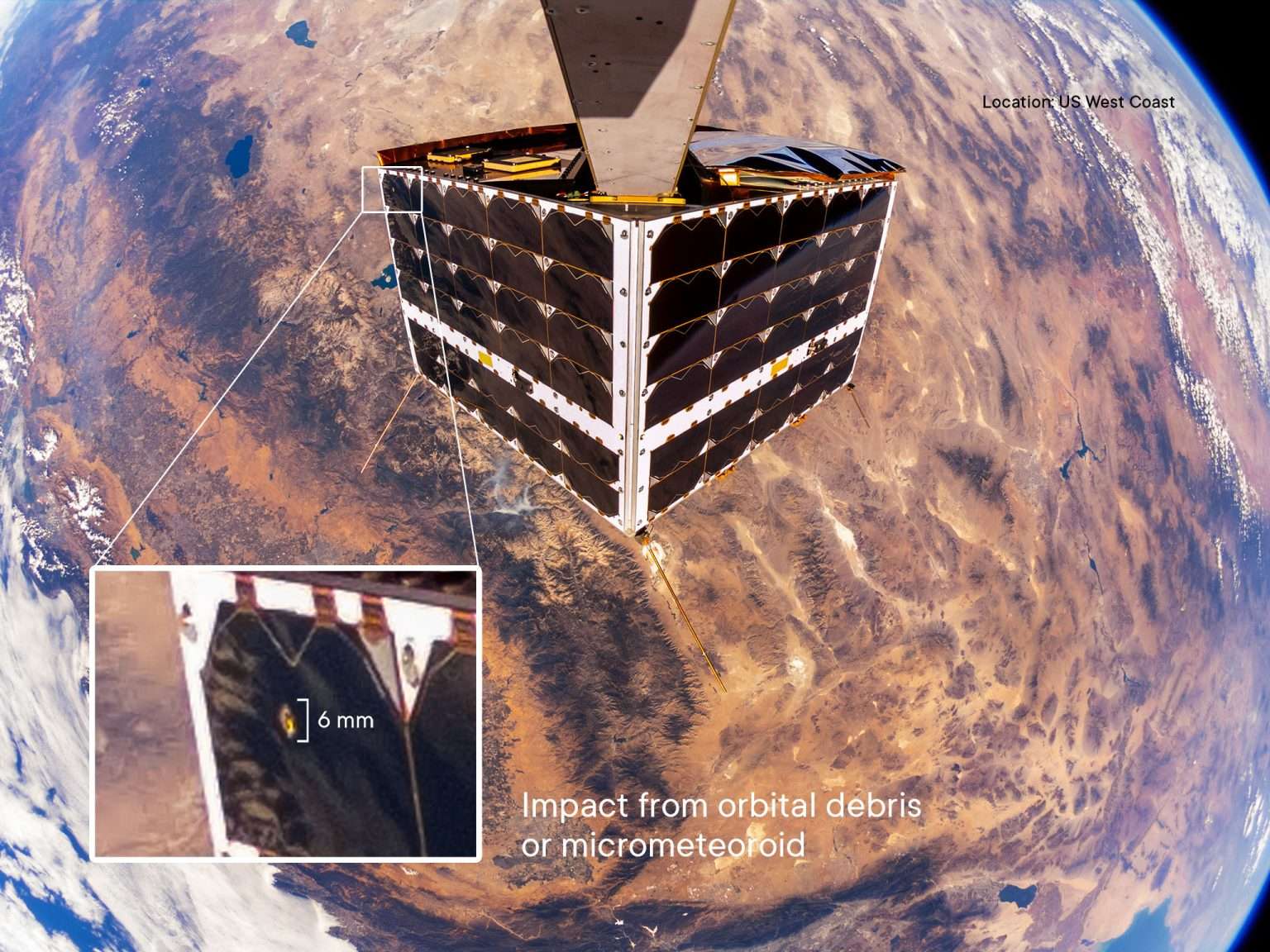A tiny puncture found within the photo voltaic panel of a small satellite tv for pc orbiting Earth highlights the seriousness of the orbital litter downside.
Lithuania-based satellite tv for pc producer NanoAvionics found the 0.24-inch-wide (6-millimeter) gap in footage captured by an on-board digicam of its MP42 satellite tv for pc, which has been orbiting the planet since April 2022. The satellite tv for pc captured the picture on Oct 24, and NanoAvionics launched it on X on Wednesday, Oct 30.
The corporate stated in a press release it wasn’t clear whether or not the puncture was brought on by a tiny piece of house particles or a micrometeoroid. The agency can also be not sure when the accident occurred because the onboard digicam hadn’t taken a photograph of the affected photo voltaic panel in 18 months previous to the invention. Furthermore, the opening is so small it precipitated no measurable drop within the photo voltaic panel’s electrical energy output.
“Whether or not this influence was from a micrometeoroid or a bit of house particles, the collision highlights the necessity for accountable house operations in orbit and makes us replicate on satellite tv for pc resilience in opposition to all these occasions,” NanoAvionics stated within the assertion.
NanoAvionics spacecraft are tiny. The most important satellite tv for pc within the firm’s portfolio is the 130-kg MP42 struck within the current collision. Bigger orbiting buildings, such because the Worldwide House Station, are at a higher threat of collisions.
That is as a result of a myriad of such small house particles fragments orbit Earth. The European House Company (ESA) estimates that 130 million house particles objects 0.4 to 0.4 inches in dimension (1 mm to 1 cm) hurtle across the planet. In 2016, one such fragment punched a 16-inch (40 cm) gap into the photo voltaic panel of ESA’s Earth-observing satellite tv for pc Sentinel 1A. The collision affected the spacecraft’s energy era, however the mission recovered from the incident.
And in August 2023, a 246lb (112-kilogram) payload adapter left behind by Europe’s Vega rocket received struck by an analogous piece of junk. The collision splintered off a number of fragments from the adapter, which had been the supposed goal of Europe’s first lively house particles removing mission, ClearSpace-1. Security considerations subsequently prompted ESA to decide on one other particles object to take away.
Most such strikes, nevertheless, stay undetected.

Bigger items of house particles, although much less quite a few, can fully destroy a satellite tv for pc. Based on ESA, over 1,100,000 fragments 0.4 to 4 inches (1 to 10 cm) in dimension zip round Earth. Along with that, 40,500 house particles objects bigger than 4 inches (10 cm) inhabit house round Earth. Round 36,800 of those objects may be tracked, which implies satellite tv for pc operators can keep away from them in case of a detailed strategy.
NanoAvionics, which has launched almost 50 satellites within the final decade, stated the corporate has carried out solely “a handful of collision avoidance maneuvers” throughout that point.
“Most lately, in 2024, our mission operators executed a sequence of three firings utilizing the satellite tv for pc’s electrical propulsion system, which lowered our buyer’s collision likelihood with one other object by a number of orders of magnitude,” NanoAvionics stated within the assertion.
House sustainability specialists are involved over the rising quantities of house particles in Earth’s orbit. One unlucky smash-up between two giant defunct objects may create hundreds of out-of-control house particles fragments, which may stay in orbit for many years, threatening different spacecraft.
The worst in-orbit collision within the historical past of spaceflight occurred in 2009 when an lively satellite tv for pc of the U.S. telecommunications constellation Iridium collided with a defunct Russian navy satellite tv for pc often called Kosmos 2251. The incident produced hundreds of house particles fragments, lots of that are nonetheless on orbit to today.





